He has been there before, but this might have been the most challenging one yet: Bob Barnhart of 22 Degrees is a veteran at lighting one of the toughest live-for-broadcast productions in the biz. And this year’s Pepsi Super Bowl LIV Halftime Show tested his skills and proved his professionalism. Join Live Design in an exclusive interview with Barnhart as he talks about the challenges he encountered and the solutions that made it all look so seamless to the millions of television viewers who tuned it to watch Jennifer Lopez and Shakira shake it under Barnhart’s lights.
Live Design: Can you talk a little about the scenic design, and how you collaborated with Bruce Rodgers and his Tribe? Where were the major lighting positions on the set?
Bob Barnhart: One of the unique challenges this year was the simple fact that we had two major headliners. So we essentially had two different camps with different ideas and approaches. Bruce did an amazing job of trying to blend the two camps together to make one cohesive idea. One of the early ideas that got thrown into the mix was the four runways of lights up stage. Then another idea came up that maybe the stage should be surrounded by beams of lights. So before we even had the creative set, this concept went into motion, with Bruce always showing some type of instrument on the stage, a placeholder if you will. This then allowed us to drive that look into the concept of the two camps. Both acts were hungry for strobes on the stage. It's always a little dangerous to have that kind of firepower in regards to contamination on their faces. You can imagine how both ladies were very focused on how their close-ups would look. Working with Bruce, we decided that the band carts were the place to go. I chose the GLP KNV cube because its IP-rated and makes for a great strobe. Being that they were upstage of the talent, it allowed Jason Rudolph to use them at will and not have to worry about the contamination.
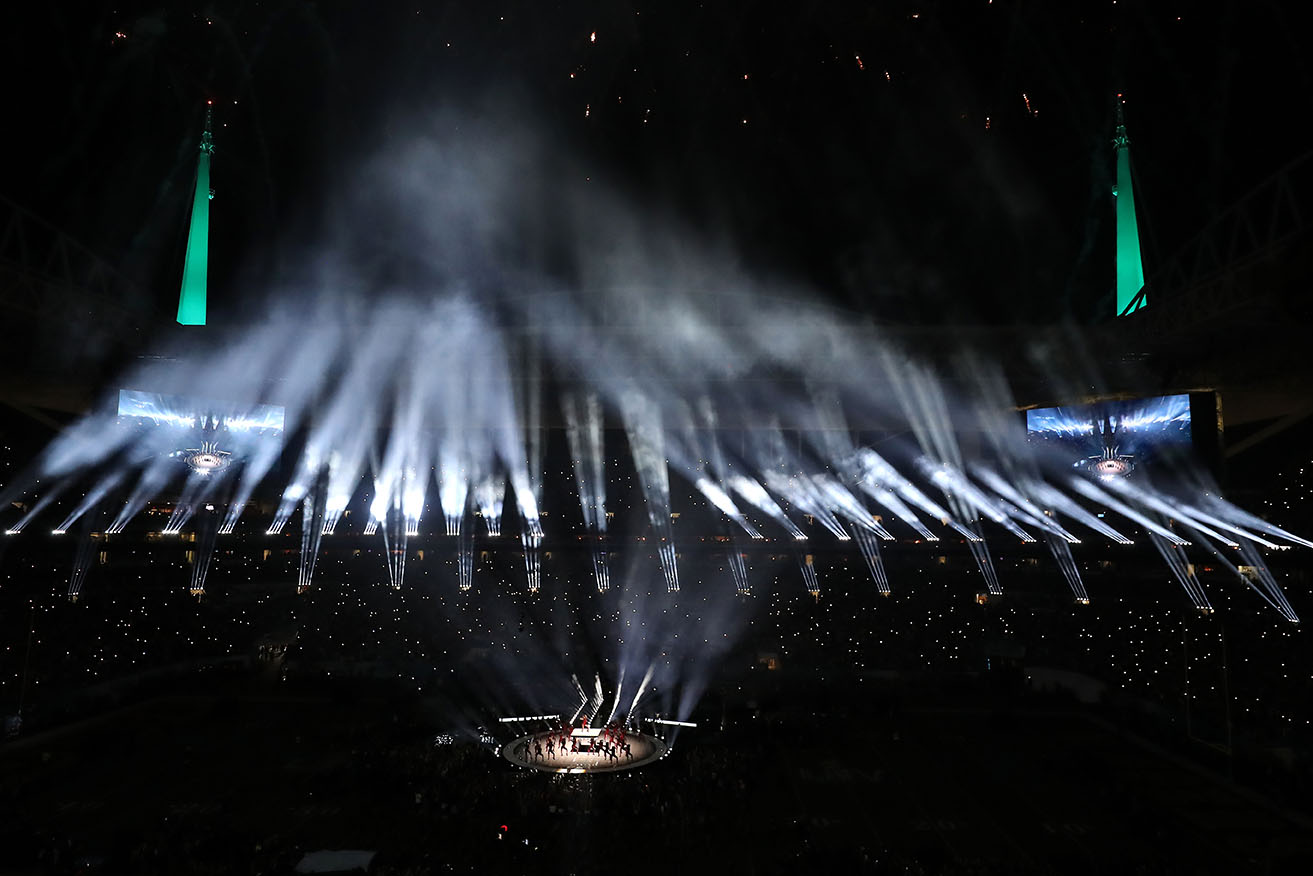
LD: What about with Michael Figge, any integration with the projections?
BB: Figge from Possible is always a pleasure to work with. They are collaborative and very creative. The relationship between our two departments is critical as color and overall vibe need to look like they came from one brain. I think when creative people can come together with open minds you can take things to another level.
LD: Architecture of the rig? What was where and why? Your workhorses?
BB: Let's start at the top. Hard Rock Stadium added an overhang/canopy since the last Super Bowl was there. This gave us a whole new rigging position for Pete Radice’s system. There I went with my normal tools. PRG Icon edges on the upstage truss and side trusses to give me beams for tempo and color. Vari-Lite VL4K Beam Wash to handle the stadium audience if needed. This year, we introduced the VL2600 profile to back light the main stage and to do key light and back light for the side stages. I was wary of using a spot on the side stages because the angle was going to be shallow, and it would have been impossible for the stedi-camera to hide their shadows. It was already difficult as it was. We of course used 12 of ARC Lightings Brite Box followspots. On the upstage rail level and the voms, we went with PRG Icon edges in clusters of four. Dave Grill figured out how many we could fit on the face of the voms, and that’s how we came up with that pattern. We continued that look on the rail so we had a nice theme. We then clustered [TMB] Solaris Flares in groups of four as well. I think this pattern worked well for us.
On the field, we had enough room for an upstage truss about 4' high and about 100' long. Here is where we took our first risk. We decided to go with the Claypaky Xtylos, which uses three lasers for the source. The beam of light is so clean and pure it was hard not to want and try them for this show.
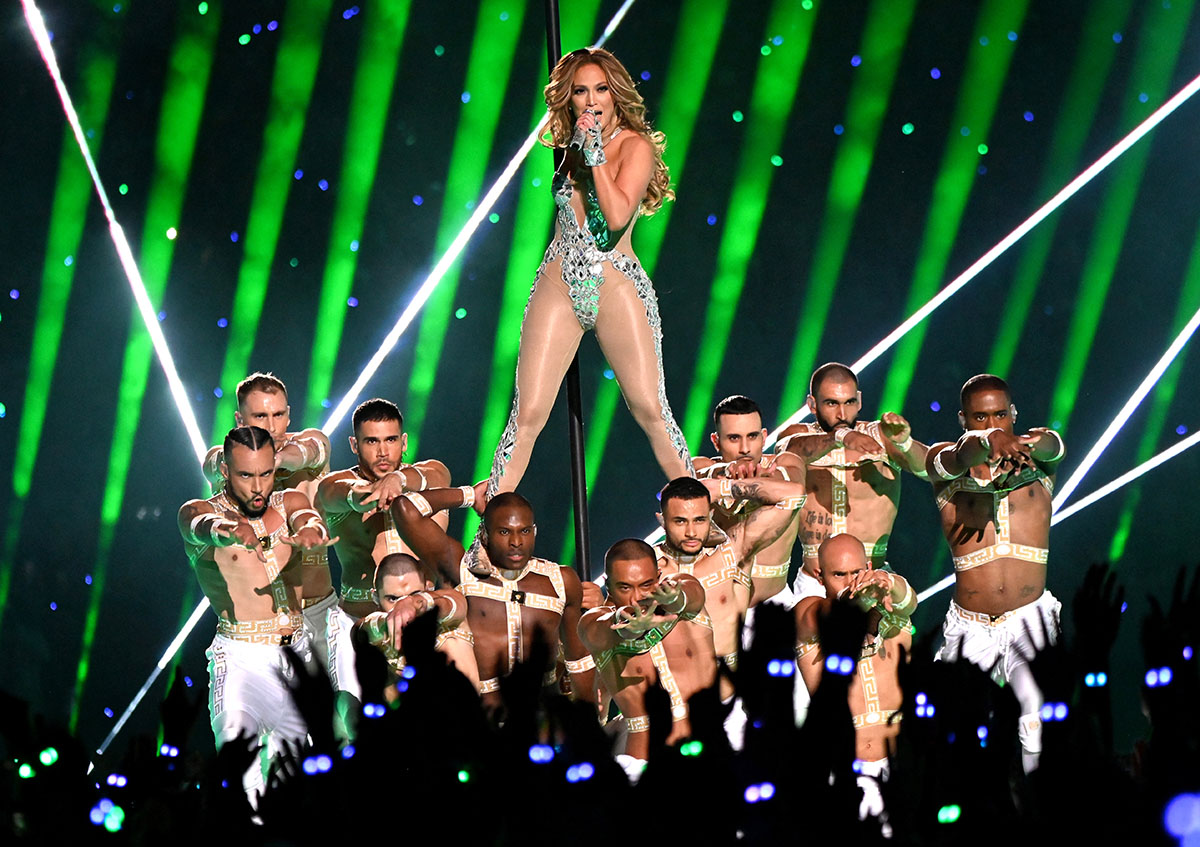
Now, as we make it to the main stage, on the band carts as we discussed earlier, we used the GLP KNV Cube, IP rated and crazy bright. Jason Rudolph also had control of all things LED (non-movers), so all the LED tape and KNV Dots that were under the lifts. This included the 99 Martin VDO Dotrons, which were clearly rigged by Tim Fallon to tilt up into place after Kashmir. Jason also controlled the video floor and other video products on the stage.
This leaves us with the center piece of the lighting rig. New to our team this year was Patrick Brazil. Patrick controlled the GLP [impression] X4 bars that were on the side ramps but his workhorse was the new Ayrton Perseo profile. An LED engine in an IP65 body. I was looking for IP-rated lights for the stage, especially because this year the lights were a big part of the production design. When I first saw this fixture at LDI, it had a two-minute call time. Which would not be a big deal to most people but the lights on the stage get power about 90 seconds before we are live around the world. Araon Hubbard made a call to the engineers, and they said they could get it down to 70 seconds, done. This fixture performed well, and I found very reliable during programming in the parking lot. We can attest to its IP rating as we got into a downpour that left us no doubt in their claim. I had chosen the lamp before we knew anything creative about the show. I went into it, thinking the shutters would not come into play. I was wrong; they became incredibly handy for “Waiting for Tonight,” as I was able to sidelight the dancers and keep the light cut off JLo.
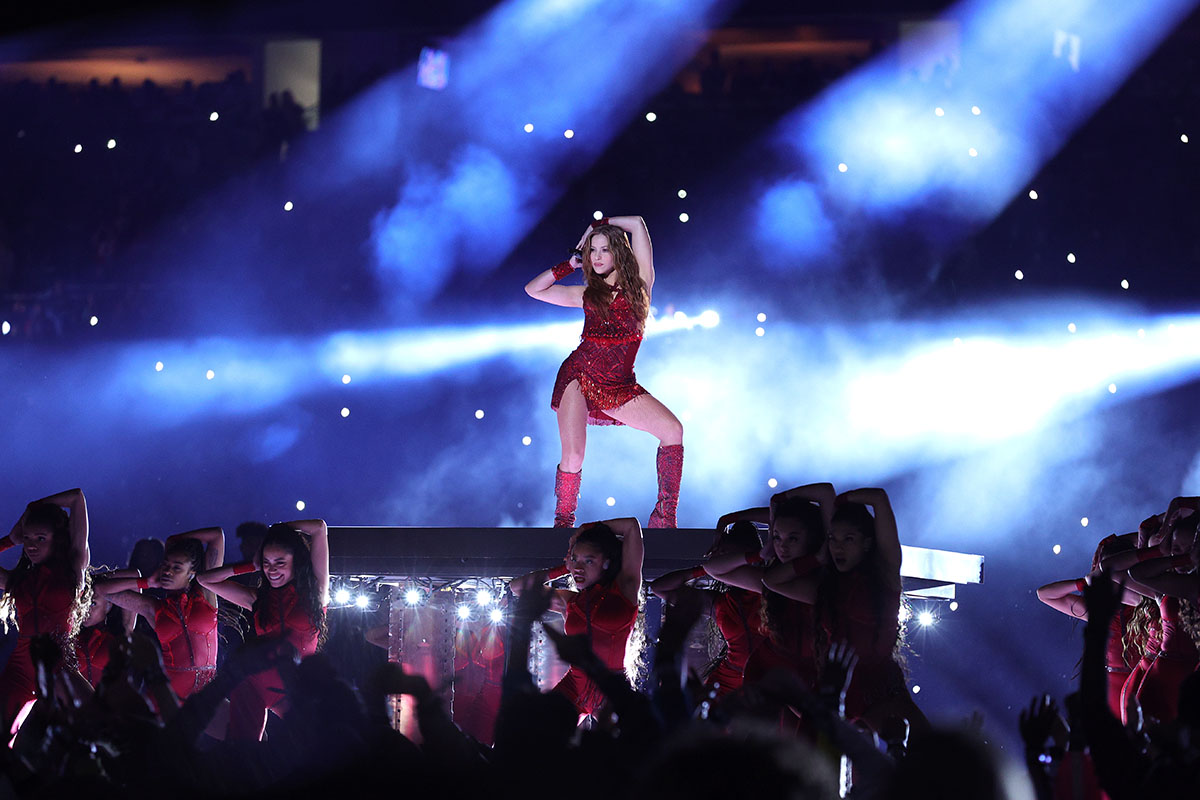
LD: Did you work with two LDs from the JLo and Shakira camps? How much input did they or their set designers have?
BB: Jennifer’s creative director is Tabitha Dumbo. Tabitha and I have been working for 15 years together on So You Think You Can Dance, so we have a good relationship. Cory FitzGerald works with Tabitha and JLo all the time. Cory did a good job of keeping us abreast of what was going on in their camp: content color, color that would enhance wardrobe, music changes. It was very helpful because information was coming later than usual. I did not have the time to become a detective and search out the changes, so Cory’s help was much appreciated. Shakira likes to work directly with you so Shakira and her camp would collectively run ideas by you. Her creative director was JaQuel Knight; he and I ran ideas by each other and proceeded from there.
LD: Interaction with the PRG crew?
BB: The entire crew we bring to the Super Bowl are veterans of the Halftime Show. It is a show unique to nothing I do all year or throughout my career. Everyone is an equal part of the team with specific responsibilities, so our PRG techs and gaffers and best boys are one in the same to me.
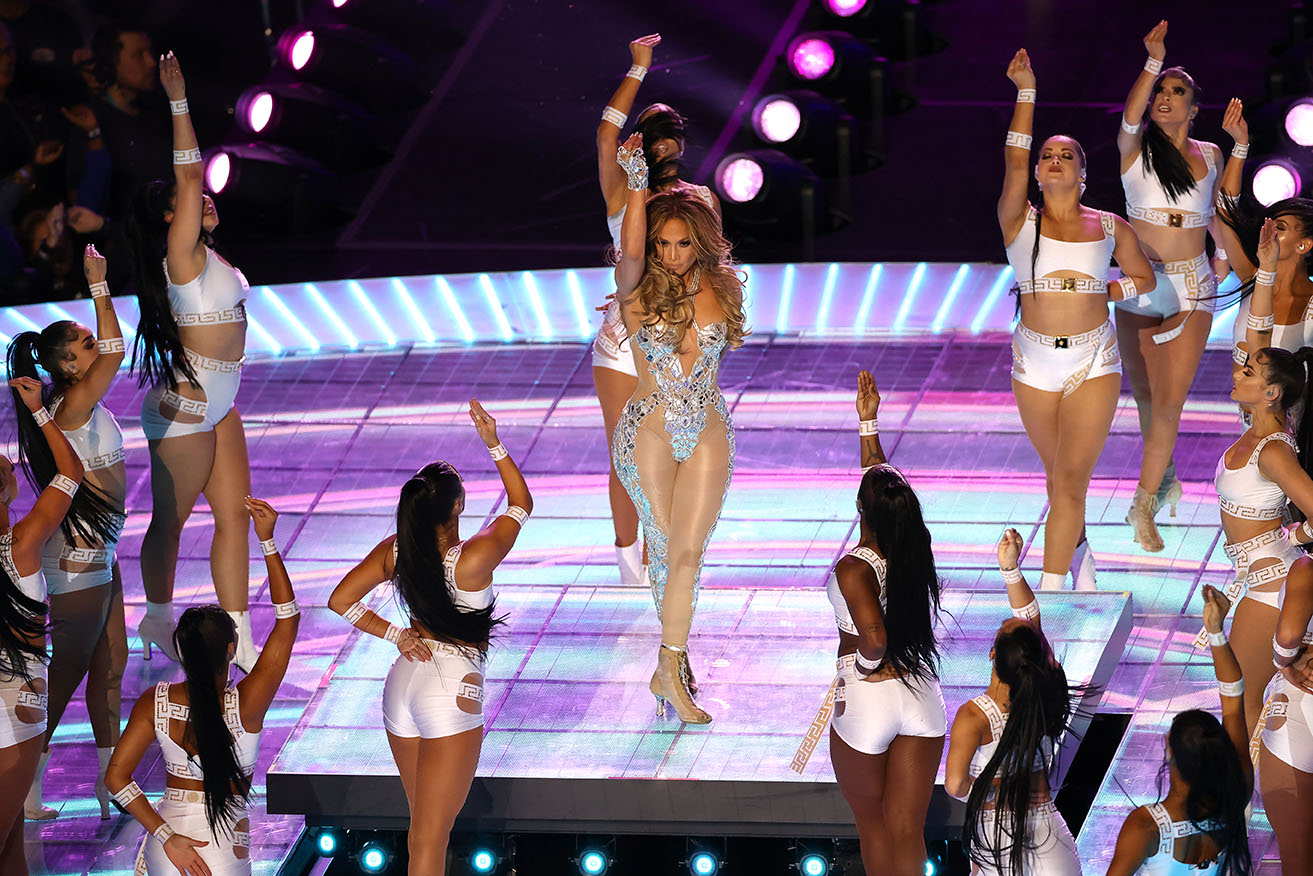
LD: Use of color?
BB: One of the challenges this year was two headline acts. We normally do about nine to eleven songs. There were almost 20 different “moments” this year. In reference to color, this meant to help show these changes, color would become a big tool in that portion of the storytelling. First, we collect everyone’s ideas for color of each song. Then I shuffle that together and see what we have too much of or if one song’s color is too similar to the next color. Shakira gravitates to warm colors, and I find that JLo likes both ends of the spectrum. To be honest, except for a few adjustments, the show from a color stand point fell into place pretty easily.
LD: Any particular challenges this year?
BB: I am not even sure where to start with this question. This year’s challenges seemed to never stop coming. The new overhang at Hard Rock Stadium was a great addition for the lighting department. However, for the NFL Field Team, in charge of getting the grass ready for Super Bowl Sunday, it was a different perspective. The canopy shades the grass to the point that the Field Team had to have 700,000 watts of grow lights on the field 24/7. This made focusing at night very difficult. It felt like you were programming during an alien invasion!
In addition to trying to ensure that the Halftime Show did not make things worse, we had to restrict our rehearsal time to two nights on the field. This took us from a total of 12 hours over four nights to three hours on Tuesday and three hours on Thursday. The lighting department has a huge challenge ahead of them. The lights mounted to the stadium and the lights mounted to the stage would only see each other twice. You can see how important this show was with those two systems integrating. Dancers, orchestras, special entrances, and field cast require a lot of delicate focusing. We relied heavily on the Previz studio to help coordinate the three lighting directors / programmers. Then when the stage would get on the field, Dave Grill and I would split programmers and focus as fast as I have ever focused lights. I think we focused 15 different moments in 20 minutes…it was nuts! Patrick’s stage was in a parking lot under LED street lights; Pete was focusing with grow lights; and Jason having to do almost all of his work in pre-viz, only made this year more complicated than usual.
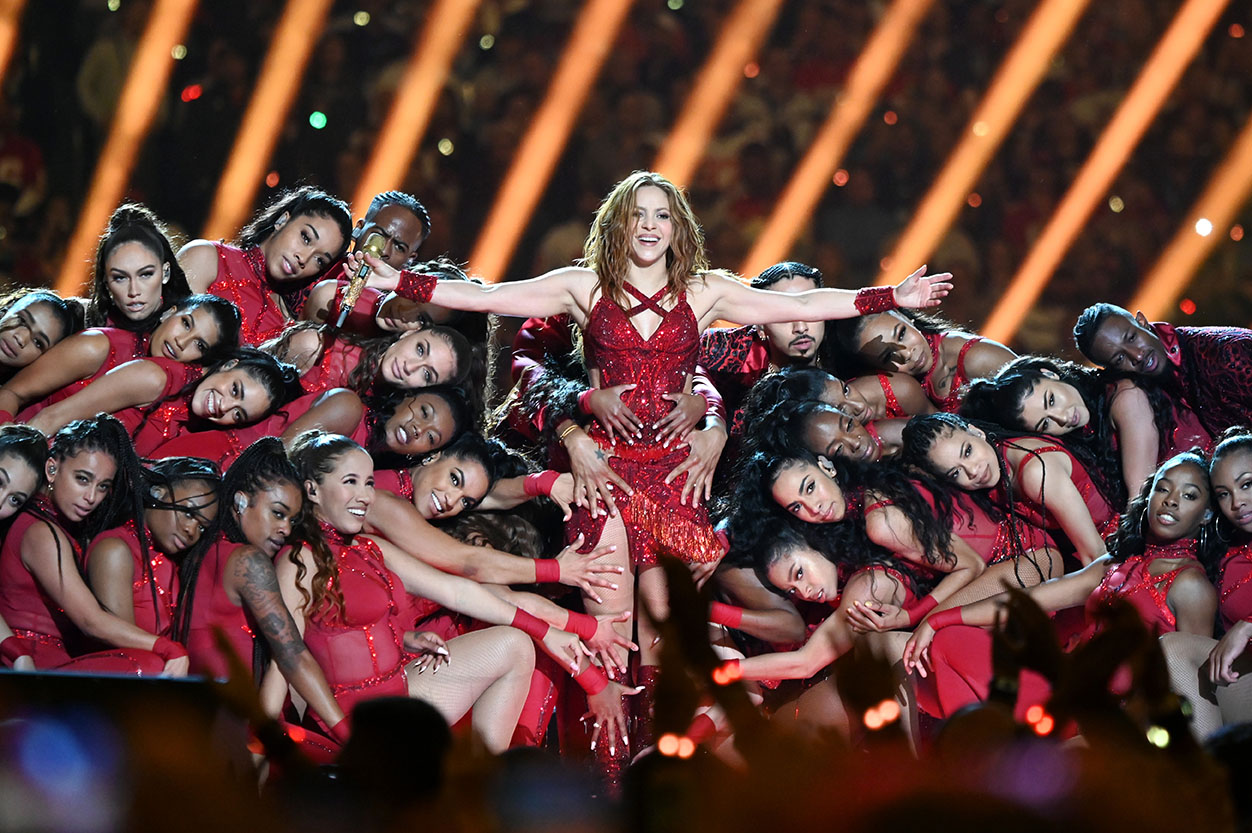
LD: Integration with the PixMob folks and product?
BB: PixMob is a pleasure to work with. They are very low maintenance and walk in on day one as part of the team. Their inferred control system (they probably have a more technical name) is really good for the Super Bowl. As you know from my other silly ideas, like Gaga drones and indoor lanterns, signal broadcasting is very difficult during a Super Bowl, and there is simply no way to simulate Super Bowl Sunday. PixMob brought in Eric Marchwinski to help with the programming of the wristbands and pods on the field. This was helpful to have another set of eyes on color palette changes and integrations, and once again, we don’t really get a good look at this until Thursday, with a small quantity of the product.
LD: What do you love about this show (other than the controlled chaos)?
BB: This was a tough year. I might need a few months to answer this one. As I always say, I am in this business for the stories but you have to earn them. All stories are funny; it’s just a matter of time after the story before it seems funny to me. There are some stories from the 1996 Olympics Opening Ceremony that still aren’t funny. In short, I would say pulling it off is the best part. Sometimes I get the feeling, this is like diffusing a bomb; at some point, my luck might run out.